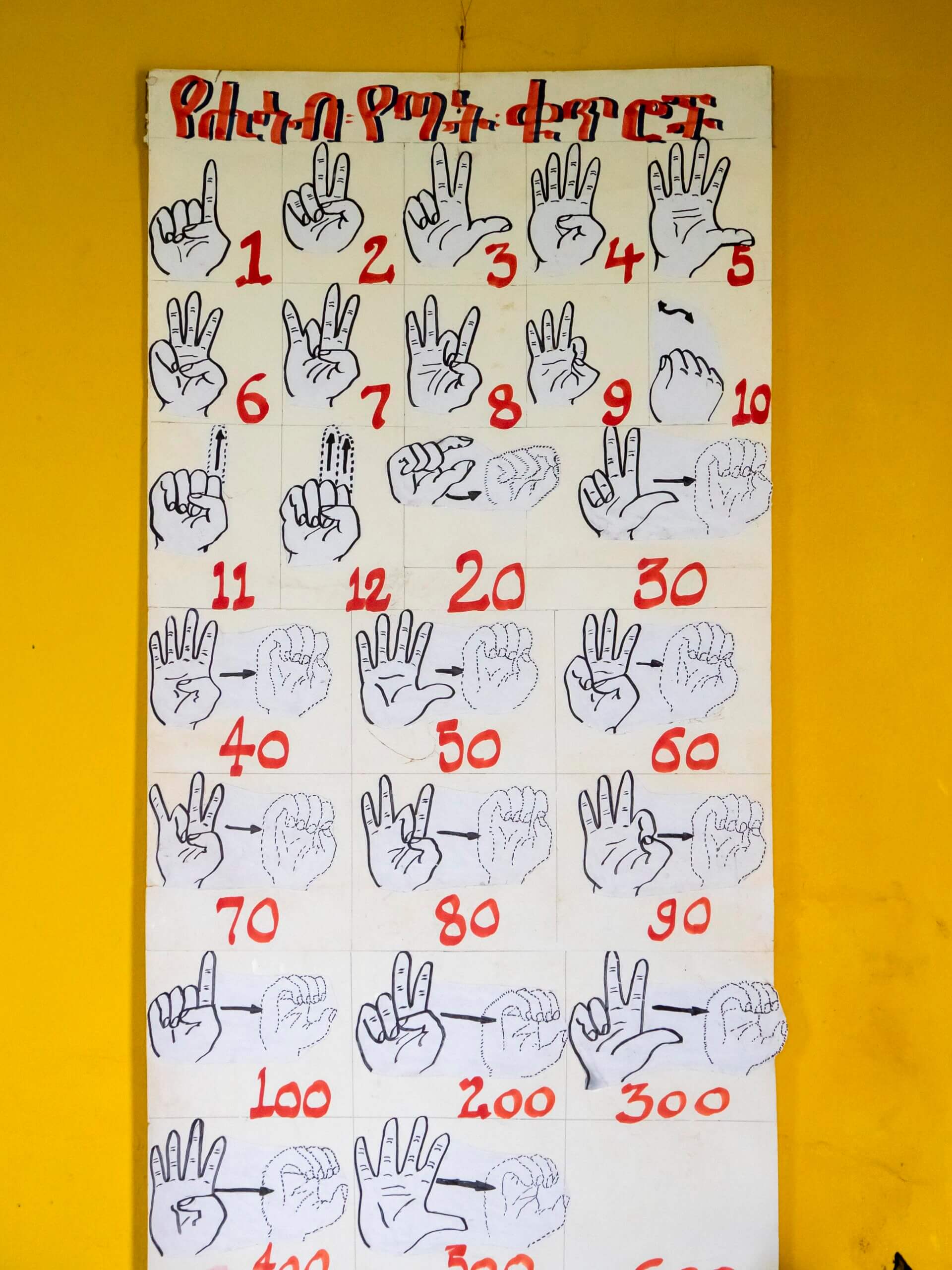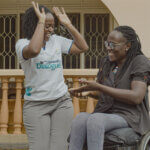- General
- Disability Rights
On International Day of Sign Languages 2024, Ambrose Murangira, Thematic Director of Disability Inclusion at Light for the World, shares his top tips on how to respectfully communicate with a Deaf person.
According to the World Federation of the Deaf, there are over 70 million Deaf people worldwide.
Together, they use more than 200 recorded sign languages, but the number could be as high as 300.
This week, International Week of Deaf People (23 to 29 September), we share expert tips on how to be inclusive when communicating with Deaf people.
5 ways to communicate with a Deaf person in a respectful and inclusive way.
Are you meeting a colleague or business partner who is Deaf? Do you have questions about how to communicate and approach them?
Here are five top tips from our disability inclusion expert, Ambrose.
1. Start the conversation respectfully
“I’m Deaf and one of the first tips I want to share with you is how you should kick things off! Before starting a conversation, attract my attention in a respectful way. Wave or tap me gently – or use another visual signal to start our interaction,” says Ambrose.
“When the conversation begins, always address the Deaf person directly, not their interpreter.
You can also learn some basics of sign language to start a conversation respectfully, such as general greetings and how to sign your name.”
2. Ask, don’t assume
“There are many ways to communicate with a Deaf person and everyone will have a preferred way. Always ask what that is!
“It could be sign language with an interpreter, writing, voice-to-text applications, or a video call with captions,” advises Ambrose.
“Mine is through an interpreter.”
“If you’re not sure you understood the person correctly, you can always ask for clarification. Likewise, encourage them to ask you to repeat or clarify anything they didn’t understand.
“You can also ask for feedback throughout the conversation, about your speaking pace, for example.”

3. Understand diversity
Ambrose says: “for someone who is not Deaf, there are many ways to communicate with a Deaf person.”
“Not all deaf people use sign language, and, for those who do, many different sign languages exist worldwide.
“There are various communication methods and preferences for different interactions, including: sign language interpreters, writing, voice-to-text applications, captions and lip-reading.
“Remember, not all Deaf people lip-read. For those who do, lip-reading often works best in one’s native language.”
4. Optimise your environment
“When communicating with a Deaf person, try to create an ideal environment,” says Ambrose.
“Minimise visual distractions and ensure good lighting. Make sure your face is well-lit and not in shadow, so the person can clearly see your facial expressions and lip movements”.
“Reduce background noise – turn off music or move to a private space – so the person can focus on you without distractions.
“This also applies in work settings. Make sure meetings – both online and in-person – are accessible. For in-person meetings, ensure an interpreter is present. For online meetings, turn on captions and transcripts, speak clearly and look directly at the camera.”
5. Be mindful of body language and volume
“Avoid shouting or raising your voice when talking to a Deaf person – it doesn’t help and can make someone uncomfortable.”
Ambrose advises to “instead, speak as you would normally and clearly.”
“Face the person directly and maintain eye contact throughout the interaction. A Deaf person needs to see your expressions, lip movements and gestures to understand you better,” he says.
“I remind people to be mindful of their facial expressions and body language, to – they convey important information about what you are saying and how you are feeling.
“Make sure you’re not covering your face or mouth with your hands, eating or moving around when you’re talking. This is particularly important for members of the Deaf community who lip-read.”
*A note on language:
Like any community, the Deaf community is diverse, and people refer to themselves in different ways. In this article, we mainly use “Deaf”, because it is the preferred language of Ambrose Murangira.
People also commonly use “deaf” to describe themselves. “Deaf” is most often used by the Deaf community and culture, while “deaf” can be more inclusive of all deaf people.
Colin Allen AM, Global Ambassador at Light for the World and Honorary President of the World Federation of the Deaf, says: “I think that by using ‘deaf’ this is more accepting of all deaf people, regardless of their sign language skills, whether they come from a deaf family, when they learned to sign, whether they choose to speak as well as sign, or whether they have a cochlear implant.
“There are so many people that come to the Deaf community later in life that we should not exclude them.
“We, a diverse group of deaf people, are all part of the Deaf community and should enjoy the richness and variety of life.”
As always, the best practice is to ask the person how they identify!
Ways to communicate with Deaf people: resources
- Want to learn more ways to communicate with a Deaf person respectfully?
- Read World Federation of the Deaf’s guide on Human Rights of Deaf People and sign language rights.
- Learn basic sign language – you can find courses on YouTube, online lessons, in-person classes of even phone applications. Remember there are more than 300 different sign languages when you are deciding which one to learn.
- Have a look at our Transformative Language Guidelines to learn more about respectful and inclusive language.
- Understand more about the importance of developing a shared sign language and the creation of the first Sign Language Dictionary in South Sudan and the country’s first sign language centre, which recently opened.
- Check out this article by National Deaf Children’s Society on communicating with Deaf children and young people.
- Read why many Deaf Africans struggle to access their rights.





